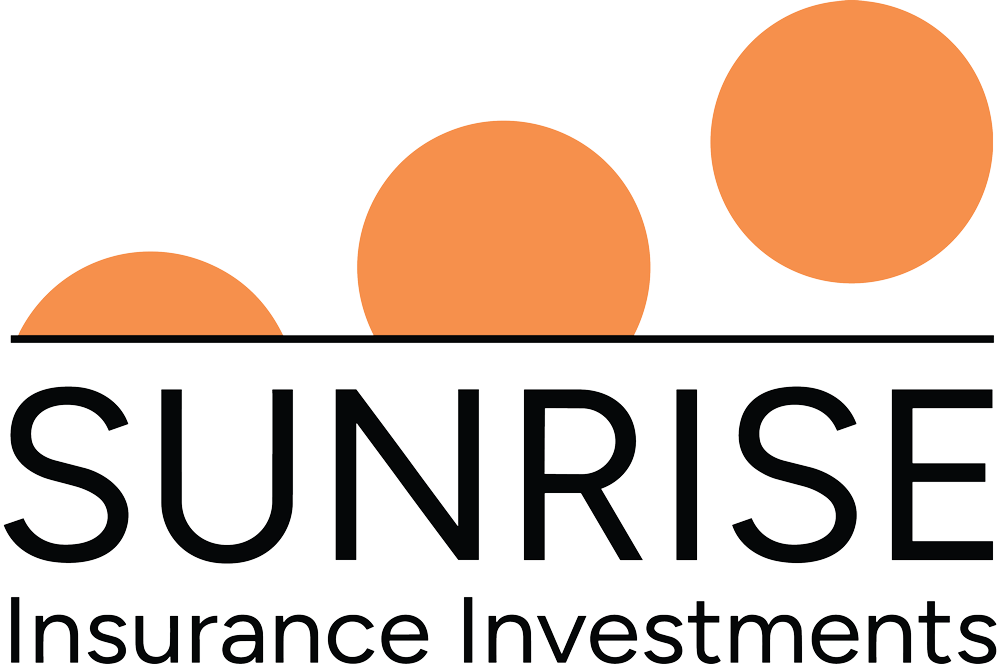Are you worried about your child’s future education costs? Planning for college can seem daunting. But, starting early and using SMART savings strategies can ease this financial burden.
Early planning and the right savings tools are key. Investing in your child’s education is vital for their future.
To begin, talk to a financial expert for a custom plan. Visit www.sunriseinsuranceinvestments.com to schedule a call. They can guide you on setting investment goals for education expenses.
Key Takeaways
- Start planning early to achieve your child’s education goals.
- Utilize SMART savings strategies to make education expenses more manageable.
- Investing in your child’s education is essential for their future.
- Consult a financial expert to create a tailored plan.
- Visit www.sunriseinsuranceinvestments.com to book a call with an expert.
Understanding the Rising Costs of Education
Education costs keep going up, and it’s key to understand the trends. For many families, the cost of education is a big deal. It’s important to plan ahead.
Current Trends in Education Expenses
Right now, education costs are increasing. A 2019 study by the Center on Budget and Policy Priorities found a 25 percent rise in college costs over ten years. This trend is likely to keep going. So, it’s important to think about both current and future costs when setting up an education savings plan.
Projecting Future Education Costs
Looking ahead at education costs involves looking at inflation and changes in expenses. Two key areas to focus on are:
- K-12 private education costs
- Higher education expense forecasts
K-12 Private Education Costs
The cost of K-12 private education can change a lot. It depends on where you live and the type of school. Planning for these expenses is key to giving your child the best education.
Higher Education Expense Forecasts
Higher education costs, like college tuition, are a big part of education expenses. Having a solid college fund planning strategy can help you get ready for these costs.
Why Early Planning Makes a Difference
Securing your child’s educational future starts with early planning. This step is key. It lets you save for higher education expenses more easily.
Early planning offers many benefits. It helps you start saving early. This way, you can look into different ways to save and invest.
The Power of Compound Interest
One big plus of early planning is compound interest. It can really grow your savings over time. This makes it a strong tool for saving for education.
“Compound interest is the eighth wonder of the world. He who understands it, earns it; he who doesn’t, pays it.”
For example, saving $500 a month from birth can add up a lot by age 18. Compound interest makes this possible.
Time as Your Greatest Asset
Time is your biggest asset for saving for college. The sooner you start, the more your money can grow. This lets you adjust your plan and explore different investments.
- More time to ride out market fluctuations
- Opportunity to adjust your savings rate
- Ability to take calculated investment risks
Overcoming Education Inflation
Education costs are rising fast. This is a big worry for parents. Starting early helps your savings keep up with these rising costs.
| Year | Average Tuition Cost | Projected Cost with 5% Inflation |
|---|---|---|
| 2023 | $20,000 | $21,000 |
| 2033 | $25,000 | $32,577 |
In conclusion, early planning is key for saving for education. It helps you use compound interest, time, and prepare for rising costs. This way, you can make sure your child is ready for their future education.
Assessing Your Child’s Educational Journey
As parents, it’s key to assess your child’s educational path. This means knowing the different education stages and their costs.
From Preschool to Higher Education
Your child’s education starts in preschool and goes up to higher education. Each level has its own costs and needs. For example, a 4-year college degree in the U.S. can cost about $41,540 a year.
Estimating Costs at Different Educational Stages
It’s important to plan by estimating costs at each stage. Here’s a look at estimated annual costs:
| Educational Stage | Estimated Annual Cost |
|---|---|
| Preschool | $5,000 – $10,000 |
| Private Elementary/Middle School | $10,000 – $20,000 |
| Private High School | $15,000 – $30,000 |
| 4-Year College/University | $41,540 (average for private institutions) |
Preparing for Unexpected Educational Expenses
It’s also important to plan for unexpected costs. These can come from changes in plans, extra activities, or other surprises. Having a savings fund can help cover these expenses.
By understanding your child’s education stages and their costs, you can make a solid plan. This way, you’re ready for the financial needs of your child’s education.
Setting Investment Goals for Education Expenses
Creating a solid plan for education expenses means setting realistic goals. This involves a detailed approach to prepare for your child’s education costs.
Defining Clear Financial Targets
First, you need to set clear financial targets. This means figuring out the total education cost and how much to save. Setting SMART (Specific, Measurable, Achievable, Relevant, Time-bound) goals helps you stay focused and reach your savings targets.
Creating Realistic Timelines
Setting realistic timelines is also key. You must think about when your child will start school and plan your savings. A longer time frame lets you invest more aggressively, while a shorter one might need more cautious strategies.
Balancing Education Savings with Other Financial Priorities
It’s important to balance education savings with other financial needs. You should consider retirement savings and planning for multiple children.
Retirement vs. Education Funding
It’s vital to balance saving for retirement and your child’s education. Supporting your child’s education is important, but don’t forget your own financial future. Ignoring retirement savings can cause financial problems later.
Multiple Children Planning Strategies
For families with more than one child, planning is essential. You might set aside a certain amount for each child or explore flexible savings options.
By setting clear goals, planning timelines, and balancing savings, you can create effective strategies. This approach ensures you fund your children’s education and secure their financial future.
Education Savings Vehicles: Finding the Right Fit
Starting your child’s educational journey means exploring different savings options. With education costs rising, picking the right vehicle is key to reaching your goals.
529 College Savings Plans
A 529 College Savings Plan helps families save for college. These plans are offered by states, state agencies, or educational institutions. They offer tax benefits for saving.
Prepaid Tuition vs. Education Savings Plans
529 plans come in two types: prepaid tuition and education savings. Prepaid plans lock in today’s tuition rates, saving you from future hikes. Education savings plans grow your money over time with various investments.
Coverdell Education Savings Accounts
Coverdell Education Savings Accounts (ESAs) are another choice for education savings. They grow tax-free and can be used for education without taxes. But, they have limits and income rules.
UGMA/UTMA Accounts
UGMA/UTMA accounts let adults manage money for minors. Though they can fund education, they’re not made for it. They might affect financial aid.
Roth IRAs for Education Funding
Using a Roth IRA for education is a strategy. You can withdraw contributions tax-free anytime. Earnings for education are tax-free without penalty.
| Savings Vehicle | Tax Benefits | Contribution Limits | Impact on Financial Aid |
|---|---|---|---|
| 529 College Savings Plans | Tax-free growth and withdrawals for qualified education expenses | High contribution limits, varies by state | Generally has a minimal impact |
| Coverdell ESAs | Tax-free growth and withdrawals for qualified education expenses | $2,000 annual contribution limit | Can impact financial aid eligibility |
| UGMA/UTMA Accounts | Income taxed at the child’s rate | No contribution limits, but gifts over $15,000 may be subject to gift tax | Can significantly impact financial aid eligibility |
| Roth IRAs | Tax-free growth and withdrawals if qualified | Contribution limits apply ($6,000 in 2022, or $7,000 if 50 or older) | Does not impact financial aid eligibility directly |
Knowing the pros and cons of each savings option helps you choose wisely. This ensures your family’s financial goals are met.
Tax-Advantaged Strategies for Education Funding
Planning for your child’s education can be easier with tax-advantaged strategies. Using the right savings vehicles and understanding tax benefits can help. This way, you can make the most of your education funding.
Maximizing Tax Benefits
One great way to save for education is through tax-advantaged savings plans. For example, contributions to 529 college savings accounts grow tax-free. And, withdrawals are tax-free for qualified education expenses. This makes 529 plans a top choice for education funding.
State-Specific Incentives
Many states offer extra incentives for 529 plans, like state tax deductions or credits. It’s key to check these state-specific benefits to boost your savings. For instance, some states give a state income tax deduction for 529 plan contributions. This adds to the tax benefits.
Education Tax Credits and Deductions
Education tax credits and deductions can also lower your taxes. Two big credits are the American Opportunity Tax Credit and the Lifetime Learning Credit.
American Opportunity Tax Credit
The American Opportunity Tax Credit gives up to $2,500 per eligible student for education expenses. It’s available for the first four years of college.
Lifetime Learning Credit
The Lifetime Learning Credit offers up to $2,000 per tax return for education expenses. It’s different from the American Opportunity Tax Credit because you can claim it for more years.
Building a Diversified Education Investment Portfolio
Creating a strong education investment portfolio needs careful planning and smart asset allocation. A diverse portfolio can lower risk and safeguard your savings from market ups and downs.
Age-Based Investment Approaches
Using an age-based investment strategy is a smart move. As your child gets older, you can tweak the investment mix. For younger kids, a bold investment plan works well. But, as they near college age, it’s better to play it safe.
Risk Management Strategies
It’s key to manage risk when saving for education. Spread your investments across different types, like stocks, bonds, and real estate. This way, you can soften the blow of market swings on your portfolio.
Asset Allocation for Education Funds
Asset allocation is vital for a well-rounded education investment portfolio. It means dividing your investments among various asset classes. This helps strike a balance between risk and return.
Conservative vs. Aggressive Strategies
A conservative strategy leans towards safer investments, like bonds and money market funds. An aggressive approach includes more stocks and riskier investments. Your choice depends on how much risk you’re willing to take and your child’s age.
Adjusting Allocations Over Time
As your child gets closer to college, it’s time to adjust your investments. You might move from riskier to safer investments to safeguard your savings.
“The key to a successful education investment portfolio is not just about choosing the right investments, but also about managing risk and adjusting your strategy over time.”
Incorporating Education Savings into Your Family Budget

As education costs keep going up, it’s key to add education savings to your family budget. This step prepares you for future school expenses. It also spreads out the cost, making it easier to handle.
Creating a Sustainable Savings Plan
To add education savings to your budget, start with a solid savings plan. First, check your current finances. Then, figure out how much you need for your child’s education. Lastly, set achievable goals.
Automating Your Contributions
Automating your savings makes it easier to reach your goals. Set up automatic transfers from your checking to your savings. This way, saving becomes automatic and less likely to be forgotten.
Finding Extra Money for Education Savings
To find more money for education savings, you need to budget smartly. Budgeting for school costs and redirecting windfalls and raises are smart moves.
Budgeting for School Costs
Make a detailed budget for school expenses. This will show you where to cut back. You can then save more for education.
Redirecting Windfalls and Raises
Use unexpected money, like tax refunds or bonuses, for education savings. This will really help grow your savings.
Involving Extended Family in Education Savings
Getting extended family involved in education savings can really help out. Grandparents, aunts, uncles, and more can all chip in. This builds a strong support system for your child’s education.
Grandparent Contributions
Grandparents can make a big difference in your child’s education savings. Many 529 plans let grandparents add money directly to the account. It’s a great way to support their grandchild’s education.
Gift-Giving Strategies for Education
Gift-giving can also boost education savings. Suggest that family members put money into the education fund instead of buying gifts. This is a great idea for birthdays and holidays.
Family Education Savings Circles
Starting a family education savings circle is a team effort. It means everyone works together to save for your child’s education. This creates a sense of community and shared responsibility.
Navigating Financial Aid and Scholarships
As education costs keep going up, it’s key to know how to get financial aid and scholarships. Every year, about $3 billion in federal aid goes unclaimed. This is because students don’t know it’s there or have trouble filling out the forms. It’s important to understand how to use these resources well.
Understanding How Savings Impact Aid Eligibility
The savings you have can affect how much financial aid your child gets. The Free Application for Federal Student Aid (FAFSA) looks at your Expected Family Contribution (EFC). This helps decide if you’ll get aid.
Different savings plans affect the EFC in different ways. For example, 529 College Savings Plans are treated more kindly than custodial accounts like UGMA/UTMA. These are seen as student assets, which can hurt your aid chances more.
| Savings Vehicle | Impact on EFC | Aid Eligibility |
|---|---|---|
| 529 College Savings Plans | Assessed at 5.64% | Less Impact |
| UGMA/UTMA Custodial Accounts | Assessed at 20% | More Impact |
| Roth IRAs | Not Assessed | No Impact |
Complementing Savings with Scholarship Strategies
Savings are important, but you should also look for scholarships. There are many types of scholarships, like those based on merit, need, or talent. These come from colleges, private groups, and more.
Help your child do well in school and join clubs. This can help them get more scholarships.
Strategic Timing of Account Withdrawals
When you take money out of savings accounts matters too. Try to take it out when your child needs it for school. This way, you won’t hurt your chances for aid next year.
Minimizing Impact on Financial Aid
To not hurt your aid chances, try these tips:
- Keep savings reasonable to avoid too much money that could lower aid.
- Use savings plans that are good for FAFSA, like 529 plans.
- Work with your child on scholarships and other aid.
- Plan when to take money out to match school costs.
Working with Financial Professionals on Educational Planning
Planning for your child’s education can feel overwhelming. But, with the help of financial experts, you can make a plan that fits your family. It’s not just about saving money. It’s about making a plan that fits your financial situation and goals.
When to Seek Expert Guidance
Knowing when to get help from a financial expert is key. It’s best to start early, even when your child is born or before. Early planning means you can save more effectively.
A financial advisor can create a plan just for you. They’ll consider your financial situation, how much risk you’re willing to take, and your long-term goals. They can also guide you on different savings options, like 529 plans and UGMA/UTMA accounts.
What to Look for in an Education Financial Advisor
When choosing a financial advisor, look for someone with experience in education savings. They should know about different savings options and understand taxes and financial aid. This knowledge is vital.
Also, check how they get paid. Some charge a flat fee, while others get a commission. Knowing this helps you make a better choice.
| Advisor Characteristics | Description | Importance Level |
|---|---|---|
| Experience in Education Planning | Proven track record in handling education savings plans | High |
| Knowledge of Savings Vehicles | Understanding of various education savings options | High |
| Fee Structure Transparency | Clear understanding of how the advisor is compensated | Medium |
Coordinating Education Planning with Overall Financial Strategy
It’s important to link your education savings to your overall financial plan. This ensures you’re not sacrificing other important goals, like retirement or paying off debt. A financial advisor can help find the right balance.
“A well-coordinated financial plan that includes education savings can significantly enhance your child’s future prospects while maintaining your financial stability.”
By linking your education savings to your overall financial plan, you create a more effective strategy. This might mean adjusting your investments, using tax benefits wisely, and making sure your education savings align with other goals.
Conclusion: Securing Your Child’s Educational Future
Securing your child’s educational future needs a solid plan and a commitment to saving. Understanding the rising costs of education is key. You can then create a plan to reach your education savings goals.
Starting early and staying disciplined are important. Use tax-advantaged savings like 529 College Savings Plans. Also, involve your extended family in saving for your child’s education.
To move forward, talk to a financial expert. They can help you make a plan that fits your needs. This way, your child will have the resources to follow their academic dreams.



